This study helps to explain how the use of the criminal history box on college applications and the supplemental requirements and procedures that follow create barriers to higher education for otherwise qualified applicants. In this study, which focuses on the State University of New York (SUNY), we found that almost two out of every three applicants who disclosed a felony conviction were denied access to higher education, not because of a purposeful denial of their application but because they were driven out of the application process.
This report surveys the current landscape of correctional education, discussing both the educational needs of people involved in the criminal justice system and the programs being provided to meet those needs. It reviews research on the effectiveness of correctional education; outlines the guiding principles for effective programming; discusses the issues involved in providing education in correctional settings; and identifies some potential responses to these challenges.
This report surveys the current landscape of correctional education, discussing both the educational needs of people involved in the criminal justice system and the programs being provided to meet those needs. It reviews research on the effectiveness of correctional education; outlines the guiding principles for effective programming; discusses the issues involved in providing education in correctional settings; and identifies some potential responses to these challenges.
This report surveys the current landscape of correctional education, discussing both the educational needs of people involved in the criminal justice system and the programs being provided to meet those needs. It reviews research on the effectiveness of correctional education; outlines the guiding principles for effective programming; discusses the issues involved in providing education in correctional settings; and identifies some potential responses to these challenges.
This report compares educational attainment of State and Federal prison inmates, jail inmates, and probationers to that of the general population.
This report presents the findings from the 2003
prison adult literacy assessment.The report includes
analyses that compare the literacy of the U.S. prison
population in 2003 with the literacy of the U.S.
prison population in 1992.
This report highlights data from the U.S. PIAAC Survey of Incarcerated Adults and its extensive background questionnaire and direct assessments of cognitive skills. It examines the skills of incarcerated adults in relationship to their work experiences and to their education and training in prison.
This report describes the design and implementation of the Vera Institute of Justice's Unlocking Potential: Pathways from Prison to Postsecondary Education project. It also outlines the experiences of Pathways partners and students and provides recommendations on policy and practice for college programs with incarcerated and formerly incarcerated students.
A report summarizing findings from an evaluation of the Vera Institute of Justice's Renewing Communities initiative between 2016 and 2019. The findings of Vera’s study, summarized here, draw on program data from, and student surveys administered at, all 14 sites. In-depth qualitative research was conducted at five of the community-based programs, housed at different colleges and universities across California.
This report, which is the result of a collaborative effort with the Georgetown Center on Poverty and Inequality, describes how lifting the current ban on awarding Pell Grants to incarcerated people would benefit workers, employers, and states.



